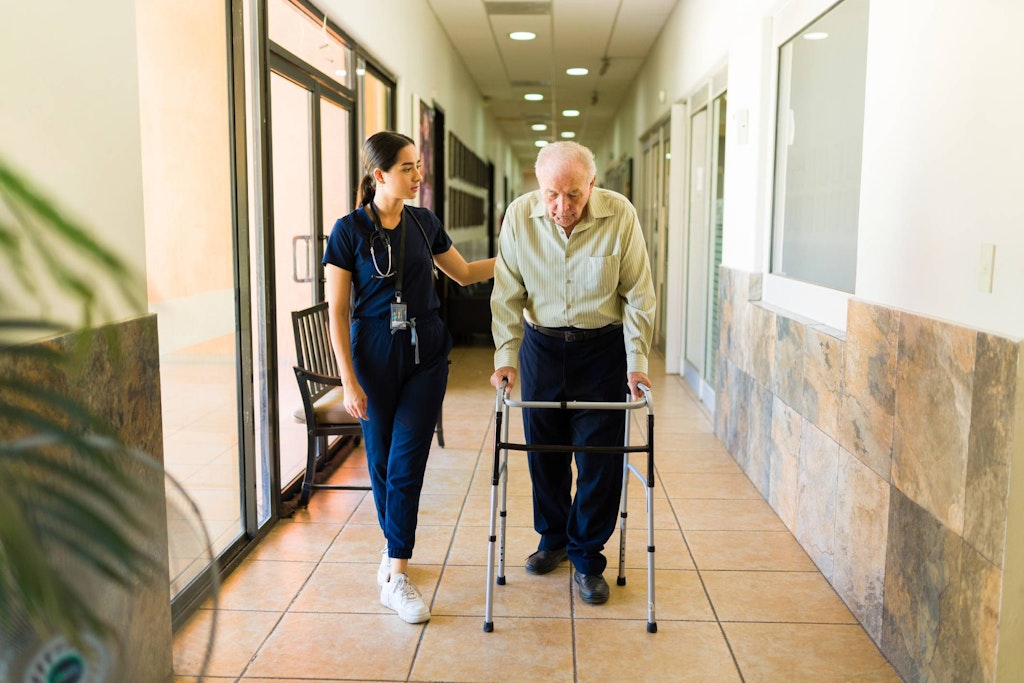Government intervenes to support Enrolled Nurses
Published on 29 November 2022 (Last updated on 1 December 2022)

Providers across the country are making changes to how they deliver care to ensure they meet new requirements, including meeting the minimum minutes of care minutes for Registered Nurses (RN’s). And whilst staffing is an ongoing issue in the sector, a Tasmanian provider’s move to redeploy Enrolled Nurses (ENs) has sparked discussion and Government intervention.
Last fortnight, Southern Cross Care Tasmania (SCCT) announced it would offer ENs, lifestyle officers and servery staff new roles within the organisation as part of its new “Household Model” of care, or voluntary redundancies for those not wishing to change positions.
But the Federal Government has expressed its frustration at the decision by SCCT to make ENs redundant due to “incorrect claims these roles are no longer funded by the Government”.
A total of $7.3 billion has been allocated to increasing care minutes to 215 minutes per day by the Government and the Minister for Health and Aged Care, Mark Butler, urged SCCT to reconsider its decision and keep ENs in place.
“It is unacceptable that after the findings and recommendations of the Royal Commission into Aged Care Quality and Safety that a small minority of providers are looking to lower the standard of care available to residents in aged care facilities,” said Minister Butler.
“The Government strongly values the vital role Enrolled Nurses play in delivering care to older Australians.
“As recommended by the Royal Commission, Enrolled Nurses need to be included in the direct care workforce to ensure there is the right mix of skills to deliver high-quality care.
“The Government has tasked the Department of Health and Aged Care to provide a response for Government which will prevent this from happening.”
Minister Butler is likely to spend part of this week speaking to a delegation of ENs and RNs who are meeting with Government Ministers in Canberra, with the support of the Australian Nursing and Midwifery Federation (ANMF).
The ANMF is focused on ensuring specified minimum care minutes are mandated for RNs, ENs and PCWs when they formally begin next year.
From October 2023, a minimum average of 200 care minutes per day will be required per resident, including 40 minutes of Registered Nurse (RN) time per day. In October 2024, those numbers increase to 215 total care minutes per day and 44 minutes of RN time per day.
ENs and personal care workers (PCW) are expected to make up the remaining time, with some aged care providers opting for additional PCWs at a lower award wage rate over ENs.
But the Aged Care Workforce Industry Council (ACWIC) Chair, Libby Lyons, said the sector cannot afford to lose any staff and it must focus on attracting and retaining ENs.
She welcomed Minister Butler’s approach to protecting the role of ENs and said that a balanced workforce is needed to deliver the best possible care.
“We must ensure there is a balanced mix of workers that includes nurses, personal care and allied health workers to meet the medical, physical, social and emotional needs of those in aged care,” said Ms Lyons.
“If providers do not maintain a balanced mix of workers, then I fear that the Government will force further regulation on a sector that is arguably already over regulated.
“Allowing each role to work to the top of their skill scope not only improves the quality and efficacy of care, it contributes to increased satisfaction at work and this is key to retaining experienced staff and attracting new nurses.
“We cannot afford for any ENs to leave aged care.”
Close to 175 SCCT staff, including ENs, would be affected by changes to SCCT’s model of care.
SCCT Chief Executive Officer (CEO), Robyn Boyd, said changes include an expansion of gyms and wellness centres, plus the introduction of qualified chefs to each facility, and that they will offer new positions where growth occurs.
“As the largest not-for-profit aged care provider in the State, we will lead this change that is being demanded by the community for aged care residents, and we are taking that challenge head on,” said Ms Boyd.
“We will need goodwill, patience and understanding from all stakeholders as we transition to this new model that puts the aged care resident front and centre of all that we do.
“Some [staff] will continue on as carers continuing to perform as usual.
“Some may not want to do that, so we will offer other roles in the organisation where we are expanding our operations such as wellness centres and case managers for home and community services.”
However, Ms Lyons hoped that growth can occur in the direct care setting where viable career pathways would be offered to ENs.
“We support action that increases nursing hours,” said Ms Lyons.
“The care needs of older Australians are increasingly acute – they need more nursing hours, not less. That was the intention of the Royal Commission’s recommendation for required care minutes, to improve outcomes for older people.
“Reform is important for retaining and attracting aged care workers, but we must ensure that the impact of change is carefully assessed and communicated. We simply must get this right.
“But as is the case with any change, the real test will be when reforms like the new Code of Conduct come into effect and we see how they are implemented and work in practice.”
SCCT’s decision to move to a more flexible, “home-like” model of care is in response to care minute mandates recommended by the Royal Commission into Aged Care Quality and Safety.